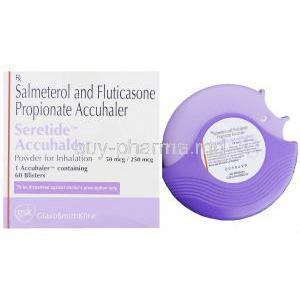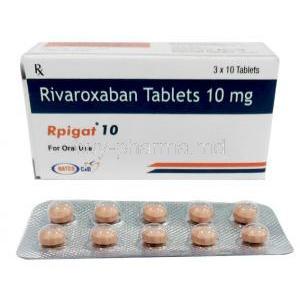Prasugrel
- I. Introduction
- II. Uses of Prasugrel
- III. How Prasugrel Works
- IV. Composition of Prasugrel
- V. Dosage and Administration
- VI. Common Side Effects
- VII. Less Common but Severe Side Effects
- VIII. Contraindications
- IX. Warnings and Important Precautions
- X. Interactions with Other Medicines
- XI. Careful Administration Guidelines
- XII. Overdose Management
- XIII. Storage Conditions
- XIV. Handling Precautions
I. Introduction
Prasugrel holds importance in the field of cardiology as a powerful medication. It is specifically formulated to address and control acute syndromes while preventing thrombotic events in individuals with stents. In today's landscape, healthcare providers must comprehensively understand Prasugrel's various aspects. This article aims to shed light on the applications of Prasugrel, ranging from its approved uses to its complex bioavailability and pharmacokinetics.
II. Uses of Prasugrel
a. Approved Uses
Prasugrel is a medication that is primarily used for two purposes:
-
Treatment of coronary syndrome: Prasugrel plays a crucial role in managing this heart condition by reducing the risks associated with unstable angina and myocardial infarction 12.
-
Preventing events in patients with stents: By inhibiting platelet aggregation, prasugrel lowers the chances of stent thrombosis occurring 12.
Here are some references that support the effectiveness of prasugrel in treating these conditions:
-
Ticagrelor or Prasugrel in Patients with Acute Coronary Syndromes: A multicenter, randomized, open-label trial that compared the effectiveness of ticagrelor and prasugrel in patients with acute coronary syndromes for whom invasive evaluation was planned. The study found that the incidence of death, myocardial infarction, or stroke was significantly lower among those who received prasugrel than among those who received ticagrelor, and the incidence of major bleeding was not significantly different between the two groups 1.
-
Prasugrel with percutaneous coronary intervention: A technology appraisal guidance by NICE that recommends prasugrel in combination with aspirin as an option for preventing atherothrombotic events in people with acute coronary syndromes having percutaneous coronary intervention, only when immediate primary percutaneous intervention for STEMI is necessary; stent thrombosis has occurred during clopidogrel treatment; or the person has diabetes 3.
b. Off-Label Uses
Prasugrel is a medication that is primarily used to prevent thrombosis in patients with acute coronary syndrome 12. However, there is some evidence suggesting that it could provide vascular benefits for peripheral artery disease 3. There is also growing interest in exploring its role as an additional treatment option for atrial fibrillation, a prevalent cardiac arrhythmia 45.
Here are some references that support the potential usefulness of prasugrel in these areas:
- For peripheral artery disease: A study published in the European Heart Journal found that prasugrel was associated with a lower risk of cardiovascular events in patients with peripheral artery disease compared to clopidogrel 3.
- For atrial fibrillation: A report by the American College of Cardiology Solution Set Oversight Committee recommends prasugrel as an option for anticoagulant and antiplatelet therapy in patients with atrial fibrillation undergoing percutaneous coronary intervention or with atherosclerotic cardiovascular disease 4. Another study published in UpToDate suggests that prasugrel may be used as an alternative to clopidogrel in patients with atrial fibrillation who are undergoing percutaneous coronary intervention 5.
III. How Prasugrel Works
a. Mechanism of Action
Prasugrel showcases its abilities through two main mechanisms: 1. Antiplatelet properties: It counters explicitly the activity of the P2Y12 ADP receptor, thereby reducing platelet aggregation. 2. Inhibition of ADP receptors: It limits the effects of adenosine diphosphate (ADP), reducing the formation of blood clots.
b. Bioavailability and Pharmacokinetics
The drug's effectiveness is supported by its ability to be easily absorbed by the body and its favorable pharmacokinetic properties. When taken orally, it is rapidly absorbed, allowing for therapeutic action. It is also distributed throughout tissues in the body, which helps ensure a comprehensive therapeutic effect. The drug is primarily eliminated through the liver with some involvement from the kidneys, resulting in lingering drug activity.
IV. Composition of Prasugrel
On a level, Prasugrel is characterized by its distinct chemical composition that consists of active and inactive components. There are variations of Prasugrel available, with the differentiation primarily based on the quantity of the active ingredient.

V. Dosage and Administration
a. Standard Dosage
The usual dosing guidelines for adults are as follows: dose: It is generally advised to start with a loading dose. Maintenance dose: The subsequent dosing will be adjusted based on how the patient responds. If needed dosage adjustments may be made based on parameters related to the patient.
b. Special Cases
Prasugrel should be administered with caution in groups of people. If you have kidney or liver problems, the dosage may need to be adjusted. Additionally, if you are taking medications simultaneously, the dosage of Prasugrel may need to be recalibrated.
VI. Common Side Effects
Some common side effects include: 1. Mild digestive problems, Nausea, and indigestion are frequently reported. 2. Bruising or bleeding: This can occur because of its blood thinning properties. 3. Headaches: A harmless but commonly experienced issue. Please note that these side effects vary in severity and frequency among individuals. It is always advisable to consult a healthcare professional for guidance.
VII. Less Common but Severe Side Effects
While they are not as common, observing and monitoring for specific serious adverse effects is important. These include the risk of bleeding in the gastrointestinal and intracranial areas. Additionally, there is a hazardous condition called thrombotic thrombocytopenic purpura. Lastly, hypersensitivity reactions such as anaphylaxis and skin reactions should be considered.
VIII. Contraindications
Prasugrel should not be used in the following situations: 1. Patients with bleeding disorders as the drug has antiplatelet effects. 2. Individuals with a history of stroke as it increases the risk of cerebrovascular events. 3. Those with liver impairment as it may worsen hepatic conditions. This extensive article aims to provide healthcare professionals with information on Prasugrel, including its therapeutic methods and important considerations.
IX. Warnings and Important Precautions
a. General Warnings
When prescribing Prasugrel, there are some precautions to keep in mind. One of these is the risk of bleeding as Prasugrel has the potential to cause hemorrhagic events. It is essential to be cautious and vigilant. Another consideration is, for situations, where it's advisable to stop taking Prasugrel before the procedure. This is because the drug's antiplatelet effects could potentially worsen bleeding during surgery.
b. Important Precautions
Besides providing warnings it is essential to take specific precautions when using Prasugrel. It is necessary to monitor platelet counts to prevent thrombocytopenia. When Prasugrel is used together with anticoagulants it is crucial to exercise careful scrutiny to avoid increasing the risk of bleeding complications.
X. Interactions with Other Medicines
Prasugrel might interact with medications regarding its effects on the body and how it is processed. If used with anticoagulants, there could be an increased risk of bleeding. Careful monitoring is essential. Taking Prasugrel with nonsteroidal anti-inflammatory drugs (NSAIDs) may raise the chances of gastrointestinal bleeding. Specific enzyme inhibitors like ketoconazole might affect how Prasugrel is metabolized in the body.

XI. Careful Administration Guidelines
a. Administration to Elderly
Elderly patients present challenges because their body processes medications differently and they are more prone, to experiencing side effects. It is often necessary to adjust the dosage to avoid any consequences. Additionally, it may be required to monitor this group closely with more frequent assessments.
b. Administration to Pregnant Women and Nursing Mothers
Prasugrel should be used cautiously in pregnant and breastfeeding women. According to the FDA, it falls under category C, indicating risks. It is advisable to use it if the benefits outweigh the possible risks, to the fetus.
c. Administration to Children
The use of Prasugrel in patients is limited and subject to certain restrictions. It is only approved for age groups with established safety records. Additionally, dosing considerations often require adjustments based on the child's weight.
XII. Overdose Management
If someone takes too much Prasugrel, it is essential to seek immediate medical help. Signs of an overdose might include blood in urine, nosebleeds, and bleeding in the tract. The priority in treating an overdose is to control bleeding and provide care. There is currently no antidote available for this situation. In some cases, doctors may consider a platelet transfusion, as a possible treatment option.
XIII. Storage Conditions
To maintain the effectiveness of Prasugrel, it is essential to store it according to the recommended conditions. It should be stored at room temperature. Kept away from moisture and heat. Pay attention to expiration dates, as they are crucial in ensuring its potency. To prevent ingestion, keep it out of reach of children and pets.
XIV. Handling Precautions
When it comes to managing and getting rid of Prasugrel, it's essential to follow protocols. Healthcare providers should take measures like wearing gloves and using other barriers while handling the drug. To minimize any impact on the environment, it is recommended to dispose of Prasugrel through incineration or specialized methods.






































